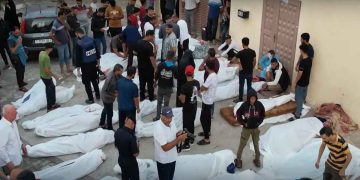The government is under pressure to explain why a series of air strikes in Yemen, many involving civilian casualties, have not been recorded in its confidential log of alleged breaches of international humanitarian law (IHL).
The existence of the database, which has been kept by the Ministry of Defence since 2015, emerged only when the government became embroiled in a legal challenge over its decision to grant UK arms manufacturers export licences to sell weapons to Saudi Arabia for use in Yemen. The challenge came amid claims the weapons were being used in breach of IHL.
By last July more than 500 possible breaches had been recorded in the database. But human rights groups allege that the true number of breaches in a conflict in which Saudi-led forces have conducted more than 20,000 air strikes must be much higher.
The government refuses to publish the database, making it impossible to know which incidents have been recorded. Defence sources suggest this is because it contains information from a wide range of assets, some of which are considered so sensitive they cannot be made public.
However, parliamentary questions have established that a number of air strikes in possible breach of IHL, recorded by human rights groups and NGOs in Yemen, have not been included.
Last October, Labour’s shadow international trade secretary, Emily Thornberry, tabled a series of questions about a range of incidents identified by the Yemen Data Project, a not-for-profit initiative maintained by security, human rights, and humanitarian experts which is considered to be the most extensive record of air strikes available.
Among the attacks identified by the project, which the MoD confirmed were not included on the database, were those in January 2018 on a bridge and a market in Al-Mufdhah area, Qaflah Athr district, resulting in the killing of 17 people and injuries to more than 20 others, and a September 2015 air strike on a funeral gathering in Khabb wa ash Sha’af district in which 30 people died



























